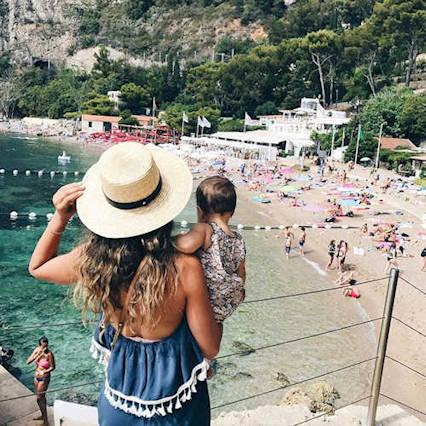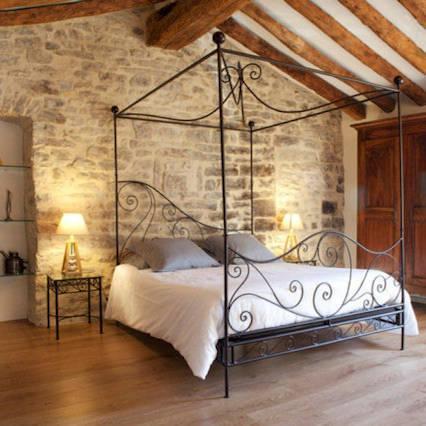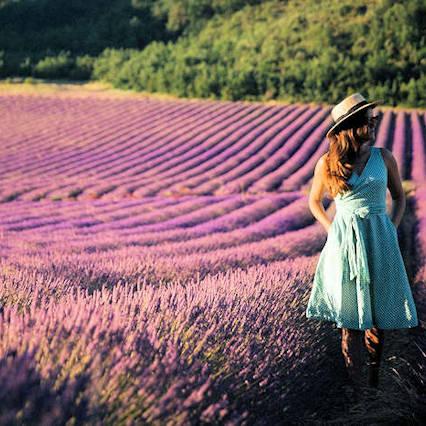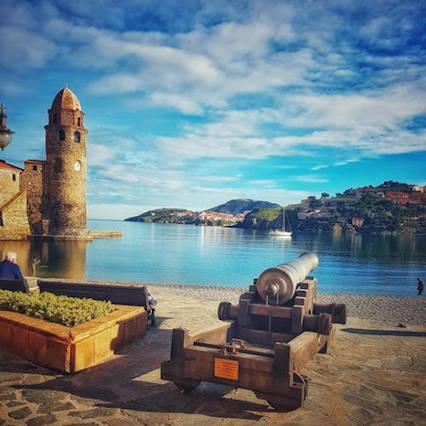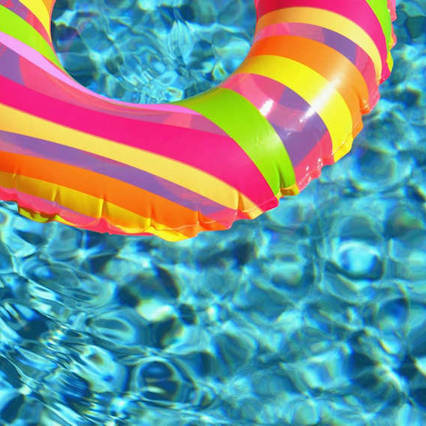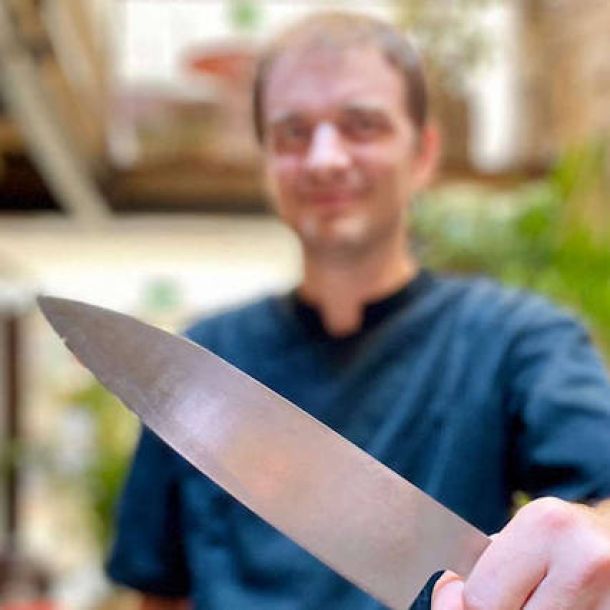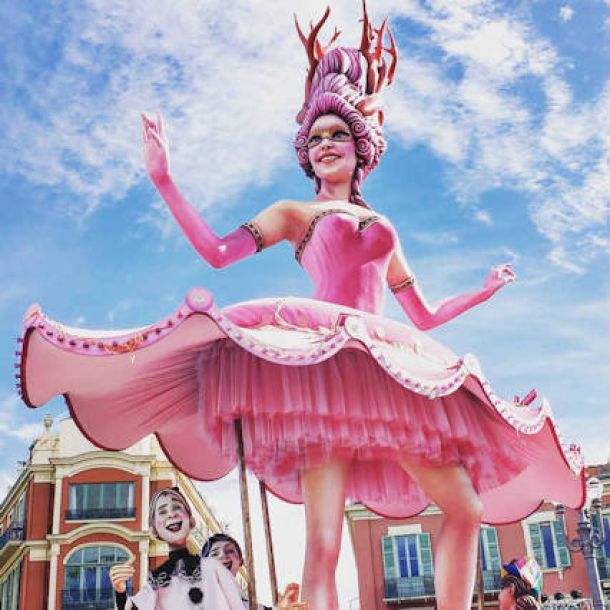- Last updated on .
- Hits: 19015
The Camargue region South France: key facts and tourism info
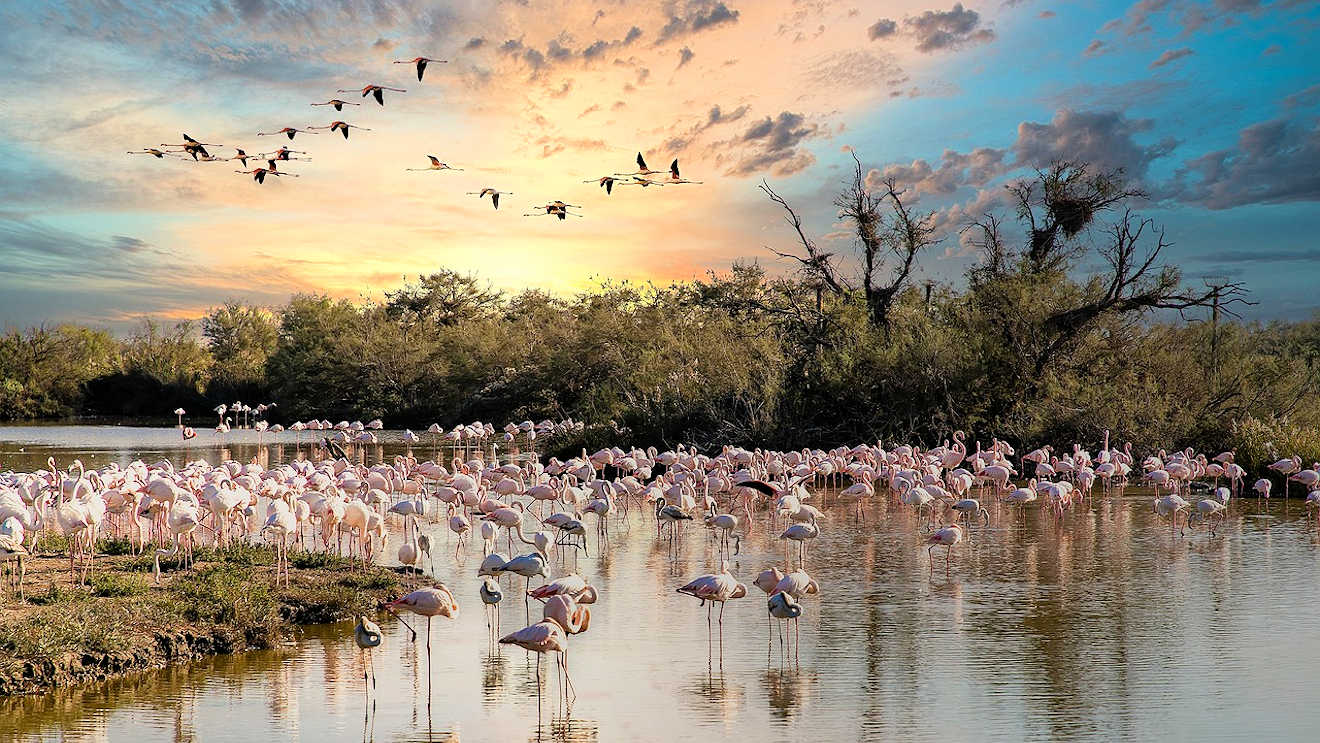
The Camargue is one of the last remaining wild wetlands in Europe. It is home to 400 species of birds including over 50,000 pink flamingos. The Camargue region is located in the south-western corner of Provence on the border with the old Languedoc region in Southern France. The River Rhône flows through the Camargue on its route to the Mediterranean sea. The city of Marseille lies to the east and Montpellier and Nîmes to the west. The Camargue is a beautiful corner of South France and a great place to visit.
The landscape of the Camargue has a wonderful barren beauty and serenity to it. The Camargue was once under covered by the ocean. Over 4 million years ago the sea stretched as far north as Lyon. When it shrank back, it left behind a salt-rich soil and marshland. The land has been inhabited for over 1 million years. In the north of the Camargue the land has been cultivated for agriculture, in particular fruit orchards and wheat. Rice fields have also been created by farmers to filtrate the salt from the fields. In the south of the Camargue, there are many salt water lagoons which have become important nesting sites for pink Flamingos.
Camargue tourist information
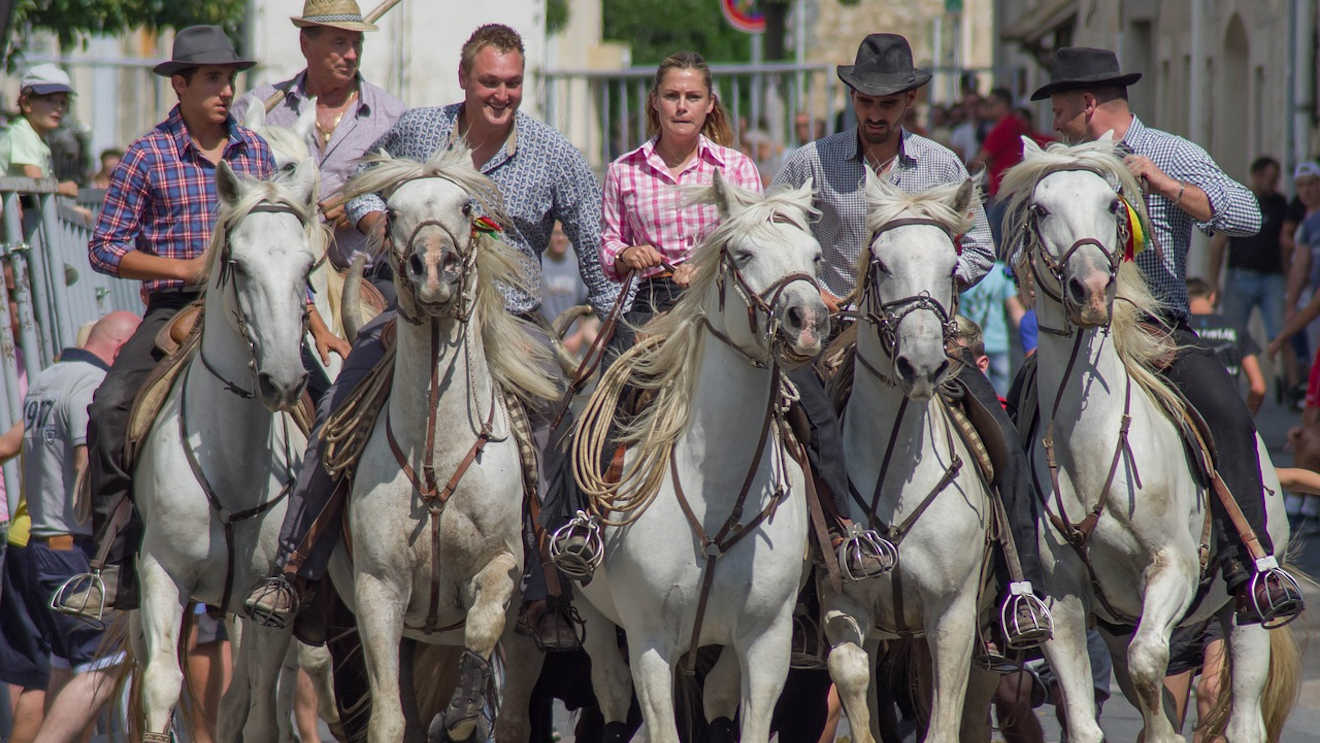
The people of the Camargue, "Les Camarguais", are often seen as Frontiersmen, tough Cattle-herders and fantastic horsemen who ride the famous white horses of the Camargue, as they herd the black bulls. The Musee Camarguais, at Mas du Pont de Rousty, Albaron (located on the road in between Arles and Saintes Maries-de-la-Mer) is a small museum housed in an old sheep shed that gives a vivid portrait of the traditional local lifestyle.
The gateway to the Camargue is the lovely old Roman city of Arles, on the banks of the River Rhône in Southern France. Arles is famous for its short, but memorable association with the artists Vincent van Gogh and Paul Gaughin. Van Gogh stayed in Arles for only 18 months, yet during this time he produced some of his most famous paintings of Camargue landscapes and real life in and around Arles.
The Camargue has long been romantically linked with writers and artists. The British novelist and poet, Lawrence Durrell, labelled the Camargue 'Little Argentina' and he was a frequent visitor to the region from his home in nearby Sommieres. The celebrated French poet, Frédéric Mistral was born and raised in Arles. The French fashion designer, Christian Lacroix, was also born in town. The Spanish-Flamenco group, the Gypsy Kings, were formed in Saintes-Maries-de-la-Mer and most of the members were born in and around Arles and Montpellier.
The famous French film, Crin-Blanc (1953) was filmed in Saintes-Maries-de-la-Mer and is about a boy who tames a wild white horse from the Camargue.
10 Facts about the Camargue region in South France
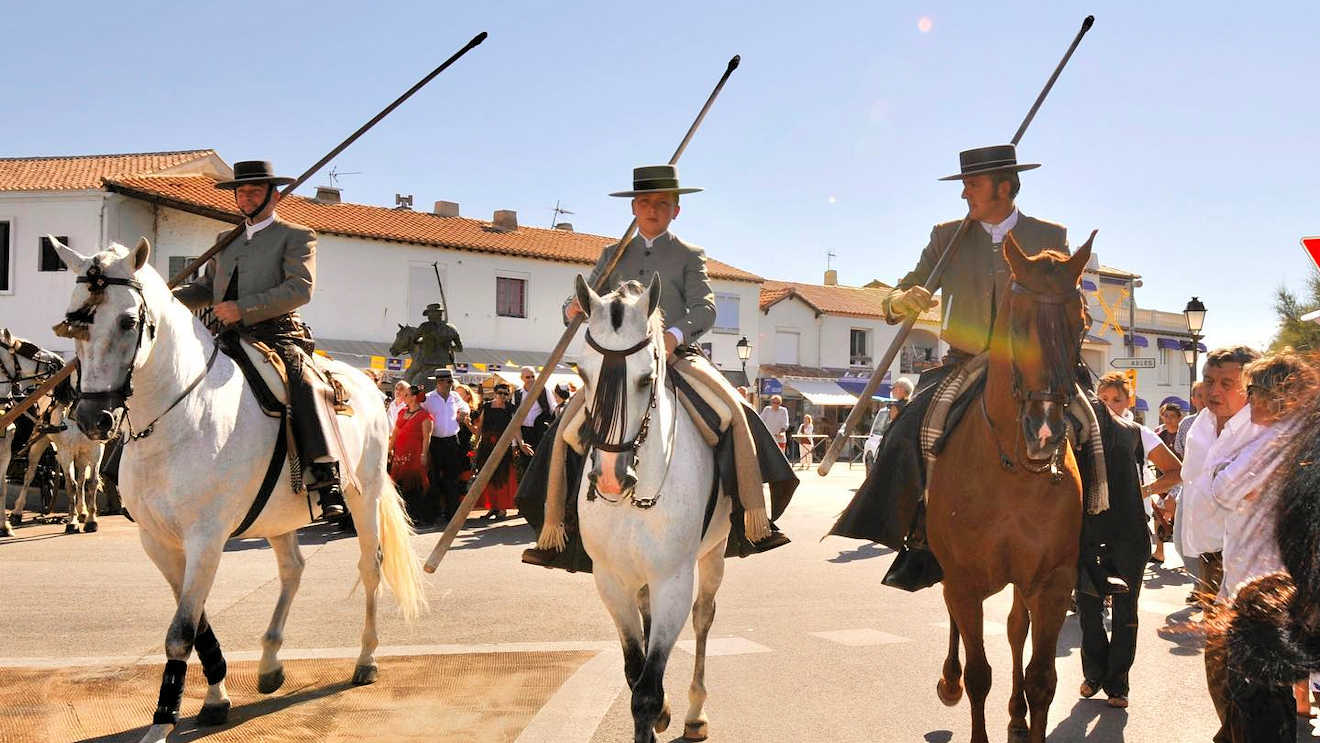 Camarguais horsemen in Saintes Maries de la Mer
Camarguais horsemen in Saintes Maries de la Mer
If you are planning a trip to the South of France, I would certainly encourage you to spend at least a day in the Camargue. It is very easy to get around and except during the high season in August, it does not get very busy (and even in August you will still have the place to yourself). I would certainly recommend that you start your visit in Arles and then drop down to the coast at either Saintes-Maries-de-la-Mer or Le-Grau-du-Roi, before making your way across the Camargue to Aigues-Mortes in the west.
Here are 10 surprising facts about the Camargue, covering its long history and unique way of life, to get you in the mood for your trip.
#1 Camargue fact: largest river delta in Europe
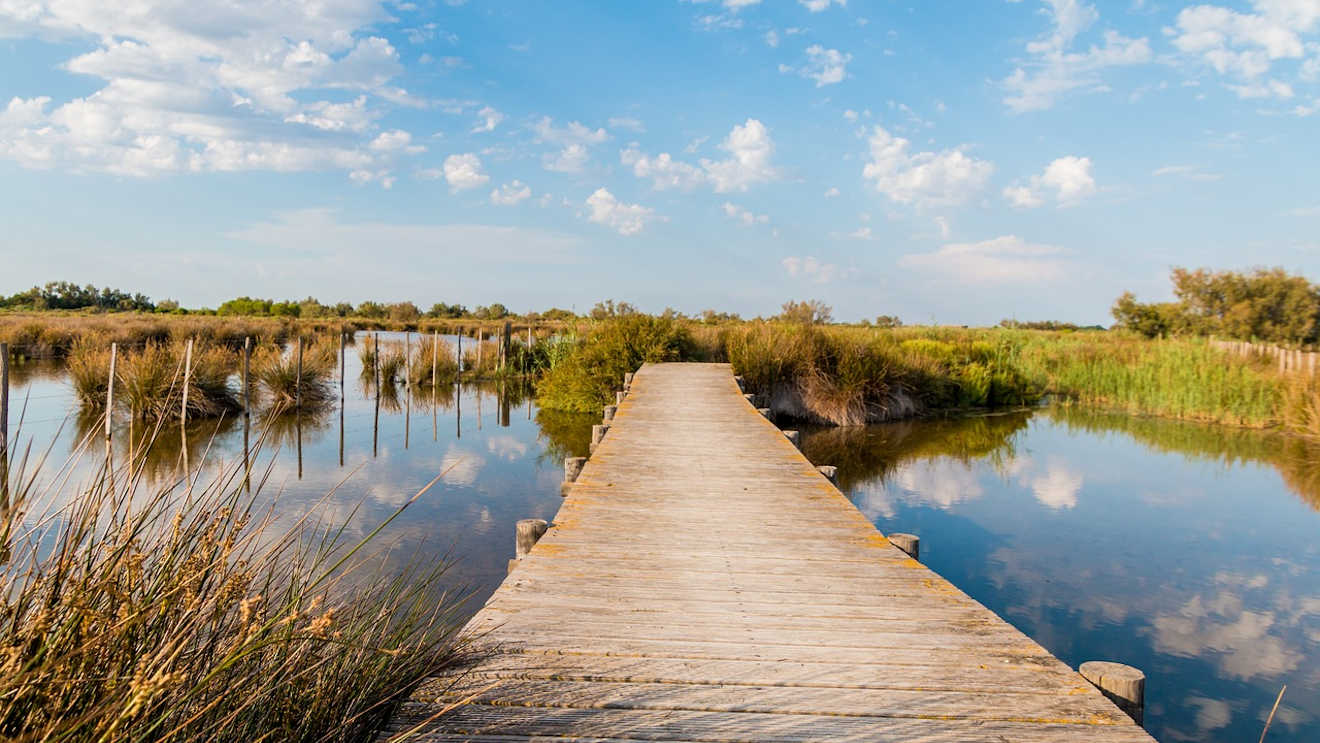
Covering an area of over 1,500 km2 (580 square miles), the Camargue is western Europe's largest river delta. The River Rhône, which is the second longest river in France, flows from the Swiss Alps into the Mediterranean sea in the Camargue.
Approximately a third of the Camargue is either lakes or marshland. The central area around the shoreline of the Étang de Vaccarès has been protected as a regional park since 1927, in recognition of its great importance as a haven for wild birds. In 2008, it was incorporated into the larger Parc naturel régional de Camargue.
More than a third of the 4,700 different species of flowering plants in France, are found in the Camargue. The pine forests at the edge of the lagoons helps protect the sand dunes from wind erosion. Behind the dune, the lagoon is the home of the rare salicornes and tamaris plants, which are unique in being able to tolerate the strong salt content of the water. Since Roman times, salicornes have been burned and the ash has been mixed with olive oil to create soap.
The Musee Baroncelli, located in Les Saintes-Maries-de-la-Mer, is a small museum dedicated to the flora and fauna of the Camargue region.
#2 Camargue fact: most species of bird in Europe
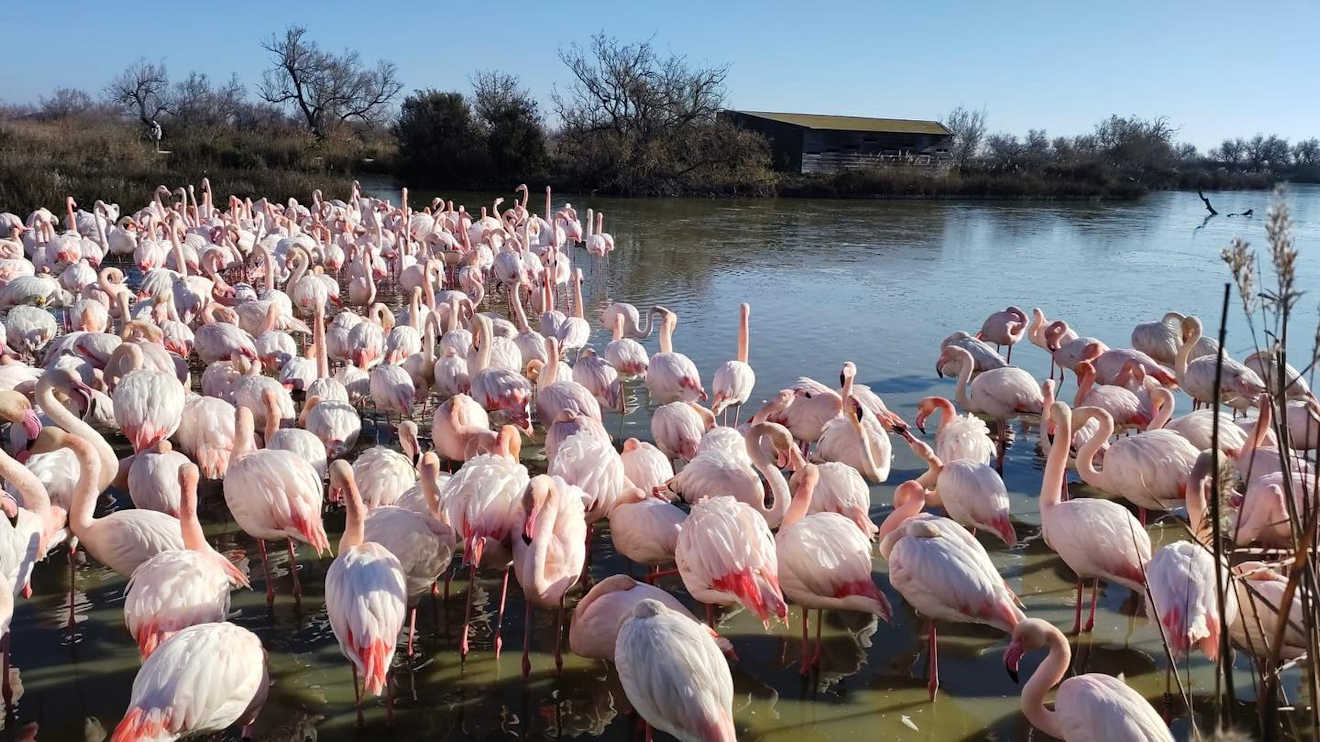
The Camargue is home to more than 400 species of birds, the most of any region in Europe. To put this into context, in the whole of Europe, there are only 900 species of birds recorded. The Camargue has been identified as an Important Bird Area by BirdLife International.
The Camargue is an Ornithologists dream. It is home to several species of egrets, sterns, avocets, herons, shelduck, gulls, hoopoes, bee-eaters and oyster-catchers. The salt water lagoons of the Camargue provides one of the few European habitats for the Greater Flamingo and the various colonies of pink flamingos are thought to number 50-60,000 birds in the height of the breeding season (March to April).
The Parc Ornithologique de Pont de Gau, has a wide collection of bird species and is an oasis for Ornithologists from all over the world.
#3 Camargue fact: a Naval Port now 5km inland
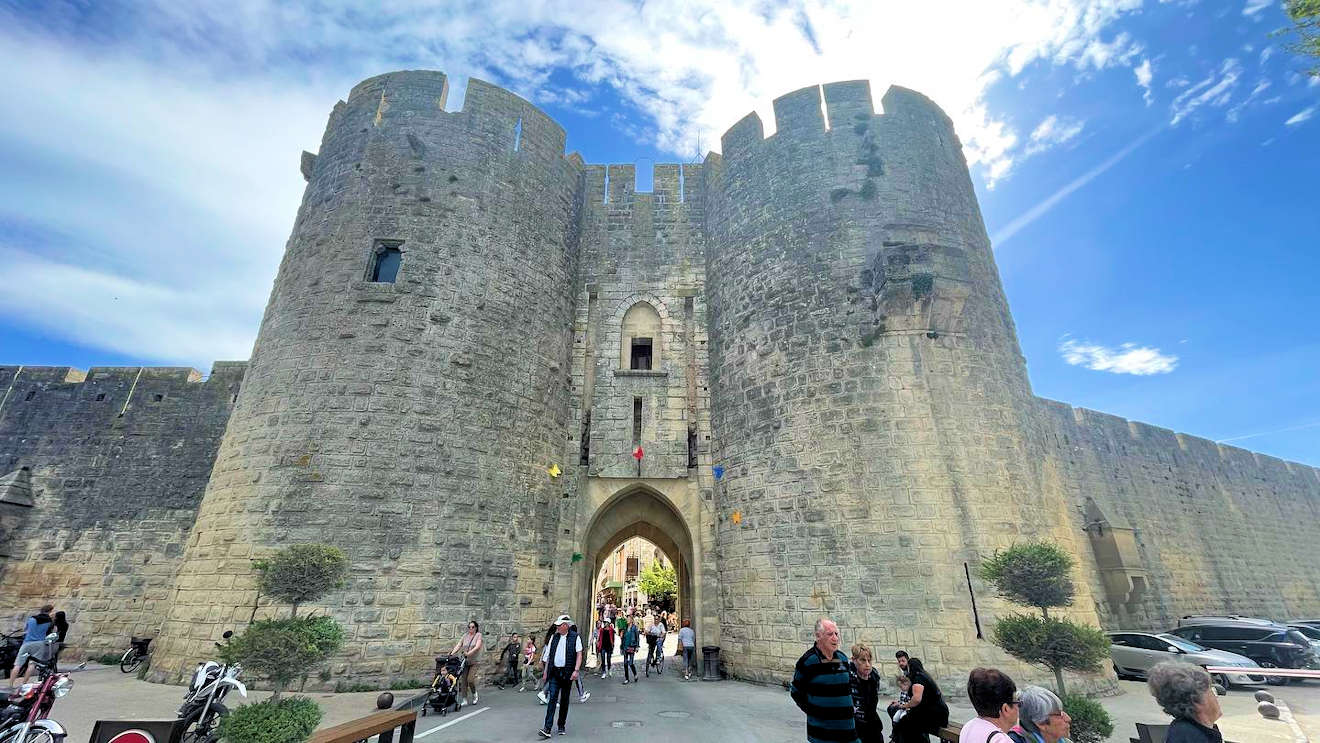
The walled-town of Aigues-Mortes, on the edge of the Camargue region, was originally designed as the French King's principal Naval port on the Mediterranean coast in Southern France. It was founded in 1246 by King Louis IX, who built the Port as his base for two expeditions to Cyprus and Tunisia (where he met with his death). His son, King Philip III, took over from his father and commissioned Genoese engineers to build up Aigues-Mortes' famous fortified walls and grid-pattern streets. At the time, Aigues-Mortes was located on the Mediterranean coast and for over a century, the town prospered from the wealth generated from the nearby salt beds. But by the end of the 14th century, the whole port began to be swallowed up by silt deposits discharged through the Camargue river delta and it could no longer be used as a naval base.
The River Rhône flows into the Camargue delta and every year it deposits up to 20 million m3 of silt into the sea. As a result, the coastline of the Camargue is constantly altered and pushed further and further into the Mediterranean sea.
During the 15th and 16th Centuries, Aigues-Mortes became very much a back-water town and it ambled through history up until the 19th century when it was rediscovered as a place to visit. Today, Aigues-Mortes lies 5km from the Mediterranean sea, with the land in between occupied by marshland and salt water lagoons. There are still many salt beds surrounding the town, but the salt water now has to be pumped 5km from the Mediterranean sea, rather than using the original medieval water channels.
#4 Camargue fact - the White horses are actually Black
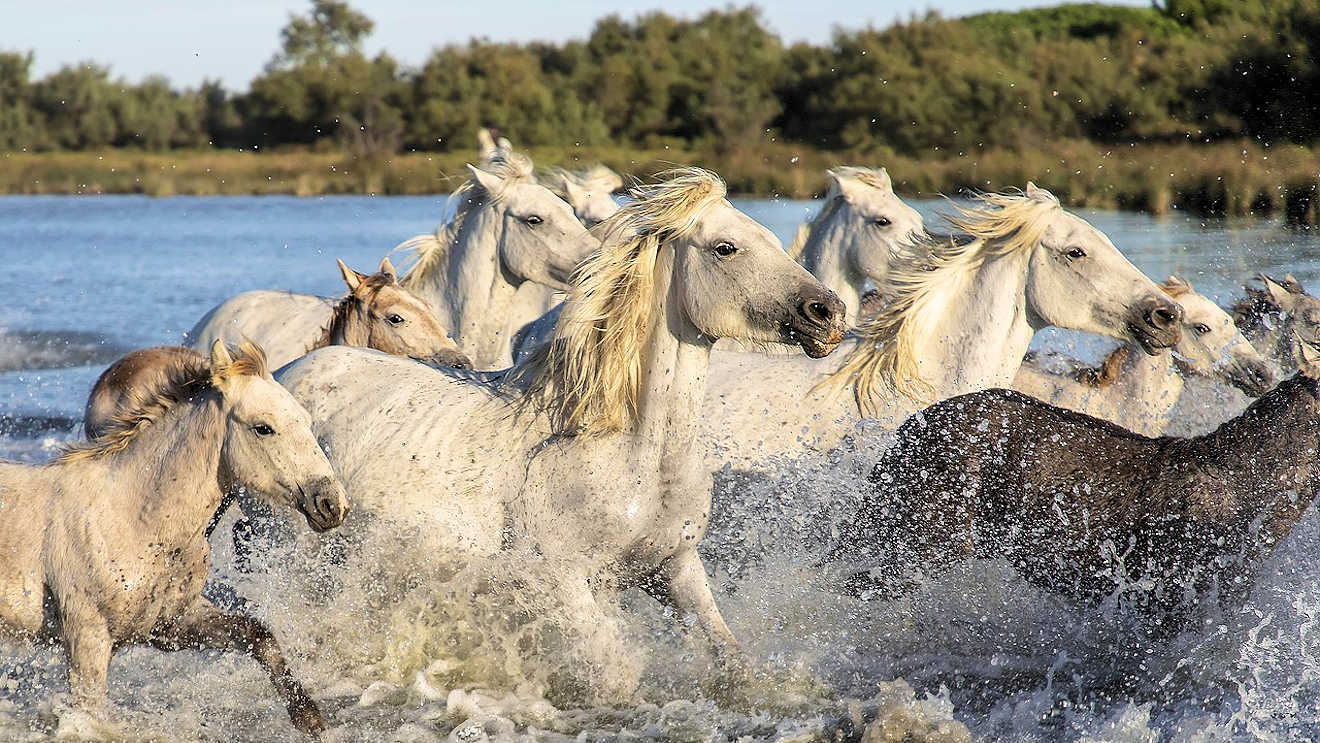
The famous white Camargue horses were thought to have first been introduced to the Camarge by Arabs about 1,000 years ago. The horses are actually born dark brown and only turn white when they reach maturity. The underlying skin of the horse is actually black. When they are born, their hair coat is black or dark brown in colour. But as they grow to adulthood, the hair coat becomes intermingled with white hairs, until it is completely white.
There are thought to be 14,500 white Camarguais horses in the Camargue region. They are small horses, generally standing at 13-14 hands and weighing around 350 to 500 kg. Despite their small size, they have the strength to carry grown adults. The horses are considered rugged and intelligent, they have a short neck, a heavy square head (similar to primitive horses), a deep chest, compact body, long legs and strong limbs. Their hooves are hard and tough, with soles that are large and wide, suited to its original marshy habitat.
For centuries, these small horses have lived in the harsh, wild environment of the Camargue marshes and wetlands. The horses evolved and developed the stamina, hardiness and agility for which they are known today. Traditionally, they live in small herds in semi-feral conditions in the marshland of the region.
#5 Camargue fact: the Camargue has 80km of Mediterranean coastline
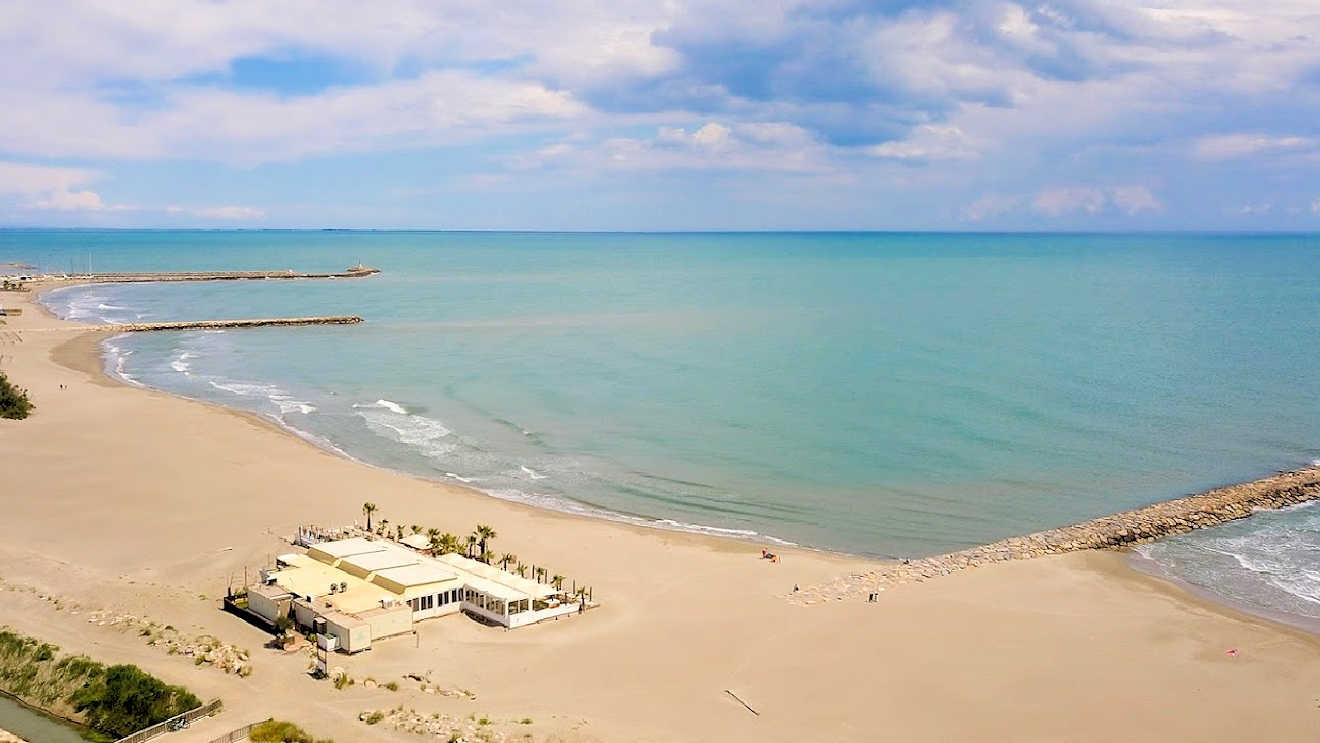 Plage Ouest, Saintes Maries de la Mer
Plage Ouest, Saintes Maries de la Mer
When you think of the Camargue, you naturally think of flat landscape dominated by lagoons and marshland. What is quite surprising is that the Camargue region actually has 80 km of sandy shores. The Camargue delta flows into the Mediterranean sea and the silt deposits have formed long, wide sandy beaches, often with large sand dunes at the back of the beach.
Among the more popular beaches on the Camargue coast include:
- L'Espiguette beach which is situated to the east of Le Grau de Roi. This white sandy beach has a wild, windswept look and unusually for a Mediterranean beach, there tends to be quite large waves. The beach has wonderful sand dunes at the rear of the beach and there is large Lighthouse end of the beach. It is possible to reach the beach by public transport from Montpellier and, as a result, L'Espiguette attracts a lot of beach-goers from the city.
- Saintes-Maries-de-la-Mer is the main coastal town and beach resort of the Camargue region. The town has 4 main beaches, including the 3km Plage Ouest and the 5km Plage Est. Large stone dykes have been built to protect the beaches at Saintes-Maries from wind and wave erosion.
- Beauduc Plage - at the far end of Plage Est in Saintes-Maries-de-la-Mer, the coastline continues until you arrive at the large sandy beach, close to the small settlement of Beauduc, which is located on a small island with a collection of shanty huts, caravans and campervans. The beach attracts a lot of kite surfers and wild campers.
- Piemanson Plage is located close to the small fishing village of Salin-de-Giraud. This beautiful unspoilt sandy beach is around 5km in length. Around half of the beach is reserved for naturists. Just like Beauduc Plage, the beach here is attracts many kite surfers and it is also a popular spot for sea-kayaking.
#6 Camargue fact: algae turns the Flamingos pink
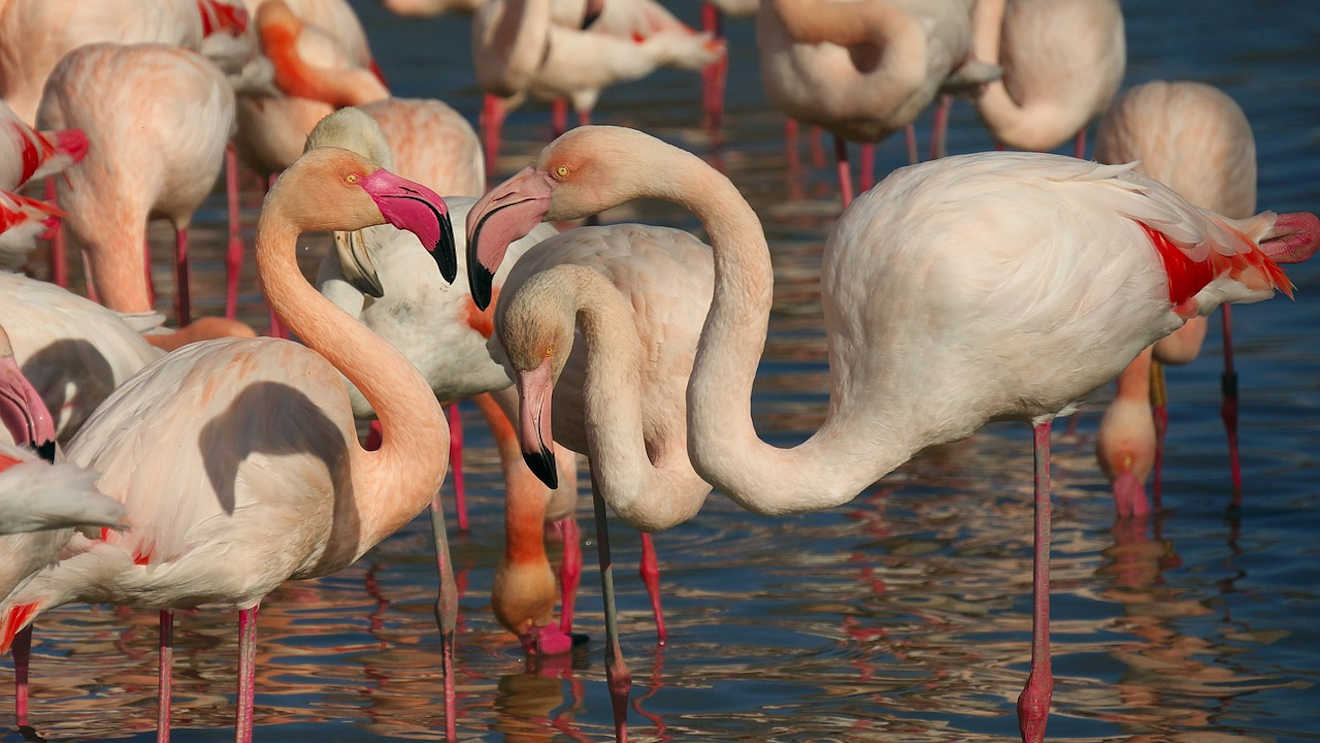
It was long thought that the small shrimps and mussels that the flamingo eats, gave them their pink colour. But in actual fact, it is the algae in the salty water that is the source of the colour. The bright pink color of flamingos comes from beta-carotene, a red-orange enzyme that’s found in high volumes within the algae, brine fly larvae, and brine shrimp that flamingos eat. In the digestive system of the birds, the enzymes break down into pigments that are absorbed as fats in the liver and deposited in the feathers and skin.
#7 Camargue fact: Vincent van Gogh sold no paintings during his stay in the Camargue
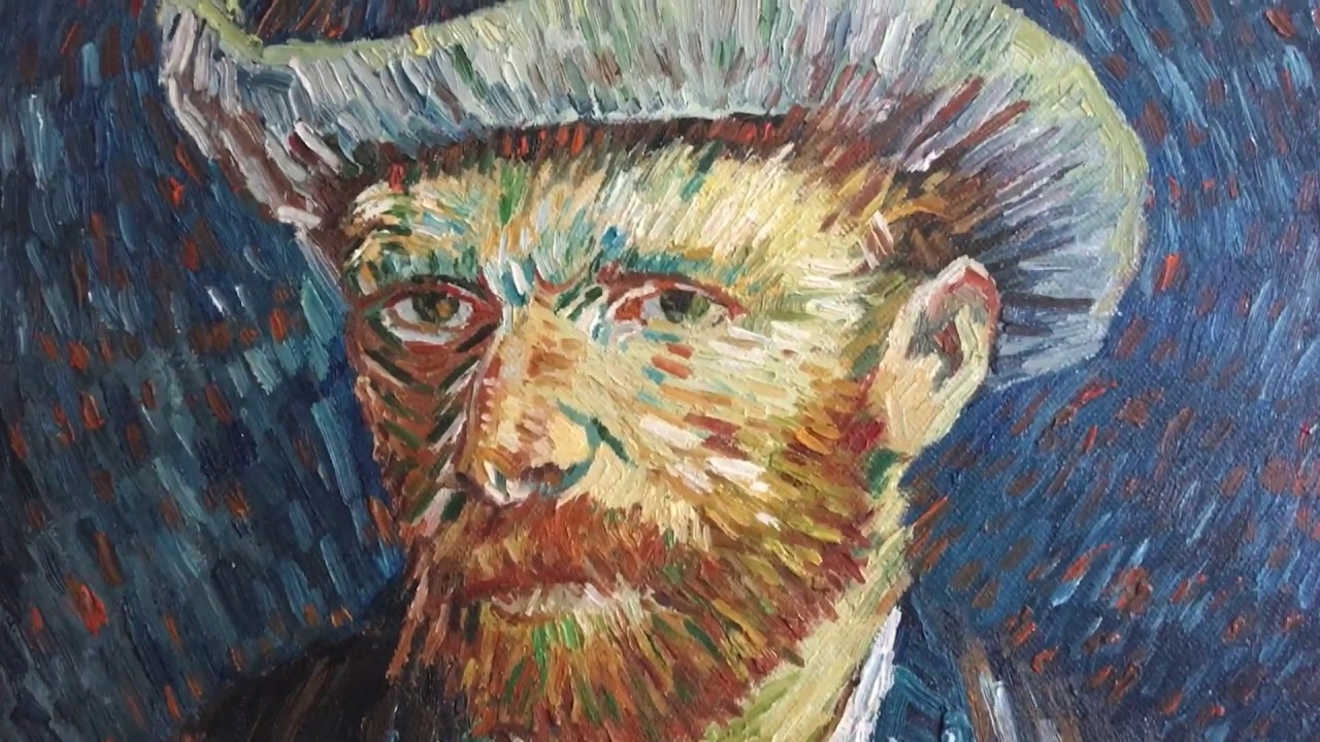
In 1888, Vincent van Gogh left Paris and travelled to the Camargue, with his fellow artist, Paul Gaugin. They stayed in the city of Arles and became well-known as drunkards and womanizers (well actually, that was mainly Gaugin). Van Gogh stayed in Arles for 15 months and travelled extensively throughout the Camargue countryside. Here he painted some of his most impressive works. Van Gogh painted more than 200 canvases in 15 months.
During this time in the Camargue region, Vincent van Gogh sold no paintings and was frequently in poverty and suffered repeated mental illness. He painted more than 200 canvases in his time in Arles, including some of his most famous, including 'Bedroom in Arles' (1888), 'Sunflowers' (1888), 'Starry night over the Rhone' (1888), 'Jardin d'Ete' (1888), ' L'Hôpital d'Arles' (1888), 'Café terrace at Night' (1888), 'Le Pont' and 'Starry Night' (1889). In fact, van Gogh only sold one painting during his lifetime 'The Red Vineyard' (1888), for which he was paid the princely sum of 400 old French Francs ($1,000 in today's money).
If you look at the sale price of just 10 paintings from van Gogh's time in Arles, it comes to a total of $570.4 million. In today's market, the paintings will be worth close to $1 billion.
- Starry Night over the Rhône (1889) - sold for $50 million in 1990 (now estimated at $250 million)
- Orchard with Cypresses (1888) - sold for $117.2 million in 2022
- Self-portrait Without a Beard (1889) - sold for $72 million, 1998
- The Avenue of Les Alyscamps (1888) - sold for $66.3 million in 2015
- Portrait of Joseph Roulin (1989) - sold for $58 million in 1989
- A Wheatfield with Cypresses (1888) - sold for $57 million in 1993
- Landscape under Stormy Sky (1889) - sold for $54 million in 2015
- Sunflowers (1889) - sold for $39.7 million in 1987
- L’Arlésienne, Madame Ginoux (1890) - sold for $36 million in 2006
- Bridge of Trinquetaille (1888) - sold for $20.2 million in 1987
Following a heated argument with Gaugin on the 23 December 1888, van Gogh sliced off part of his left ear and he was admitted to hospital in Arles on the morning of 25 December 1888. He was diagnosed by the hospital as suffering from "acute mania with generalised delirium". He was then re-admitted to the hospital on two further occasions, from 7 to 18 February 1889 and from 26 February to 8 May 1889. In May 1889, he was brought to the asylum in St Remy de Provence, by a priest and his carer. He stayed at the St Remy asylum for 12 months, before being transferred to Auvers-sur-Oise, near Paris, so that he could be closer to his devoted brother, Theo van Gogh. During a tremendous burst of artistic activity, he painted nearly 70 canvases in the last 2 months of his life. Just after completing his ominous painting 'Crows in the Wheatfields' (1890), he shot himself on 27 July 1890, and died two days later.
For more information about Vincent van Gogh's period in Arles and the Camargue, please visit our article on Vincent van Gogh in Arles & Southern France and plan your visit to take in some of the scenes painted by van Gogh in this beautiful part of France.
#8 Camargue fact: Pastis powered the Resistance
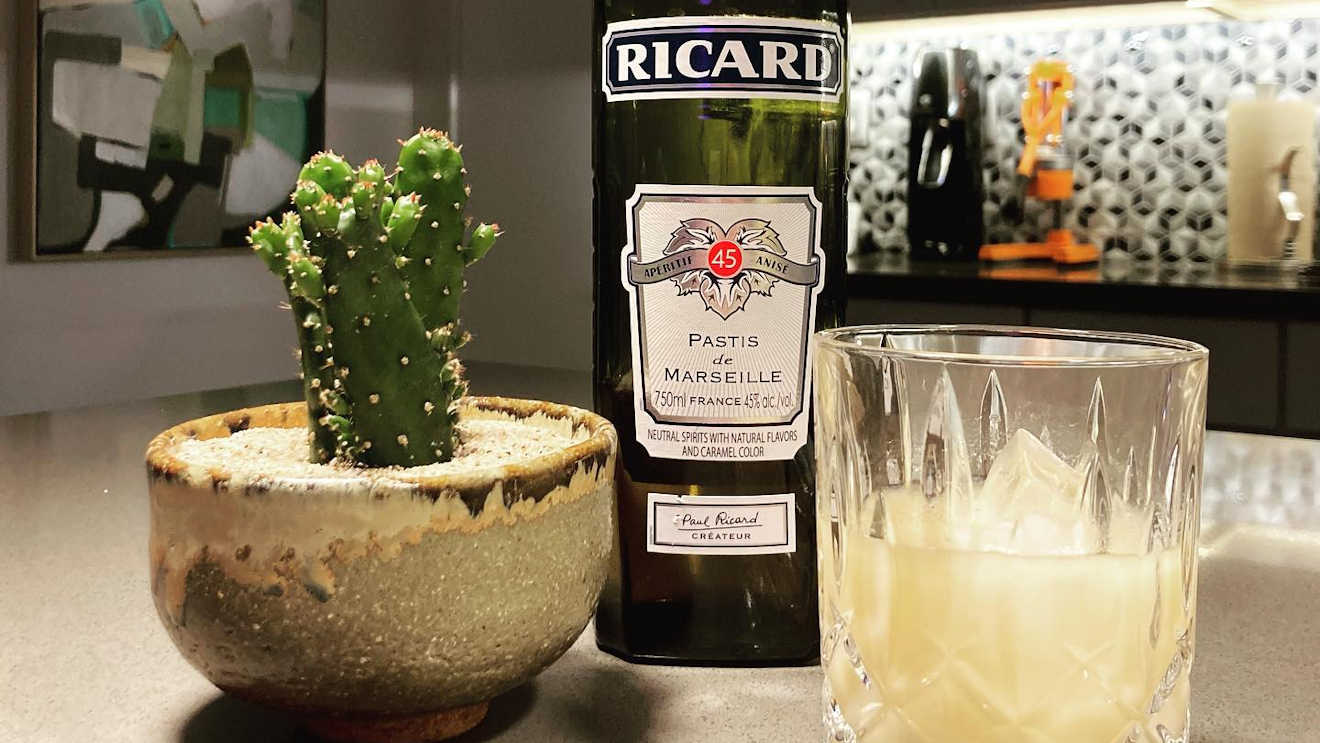
The main drink in the South of France, apart from wine, is Pastis. Walk into any bar in the South of France and you will find two old boys sat at the bar drinking Pastis. This aniseed spirt which turns yellow when you add ice and water, is as revered in Southern France, as Whisky is in Scotland. The Pastis drink was developed as a substitute for Absinthe, by Paul Ricard, the son of wealthy wine merchants from Marseille. But Paul Ricard has an interesting connection to the Camargue
Ricard was introduced to Pastis by an old shepherd in Provence, who had a make-shift distillery in a cave. At the time, Pastis was banned in France (from 1915 to 1932). Ricard began experimenting with the recipe to create a more refined version of the spirit. At the outbreak of the Second World War, Pastis and Absinthe were once again banned in Vichy France. Ricard, who had made a small fortune from Pastis between 1932 to 1940, exiled himself into the Camargue region of Southern France. In the South of France petrol was heavily rationed. Ricard found a way to circumvent the rationing, by experimenting with using fruit, such as plums and cherries in the distillation process to form alcohol. He was able to create a refined alcohol that could be used as a substitute for petrol, which he gave to the local French Resistance groups in Arles and the Camargue.
#9 Camargue fact: the Camargue is a lonely place
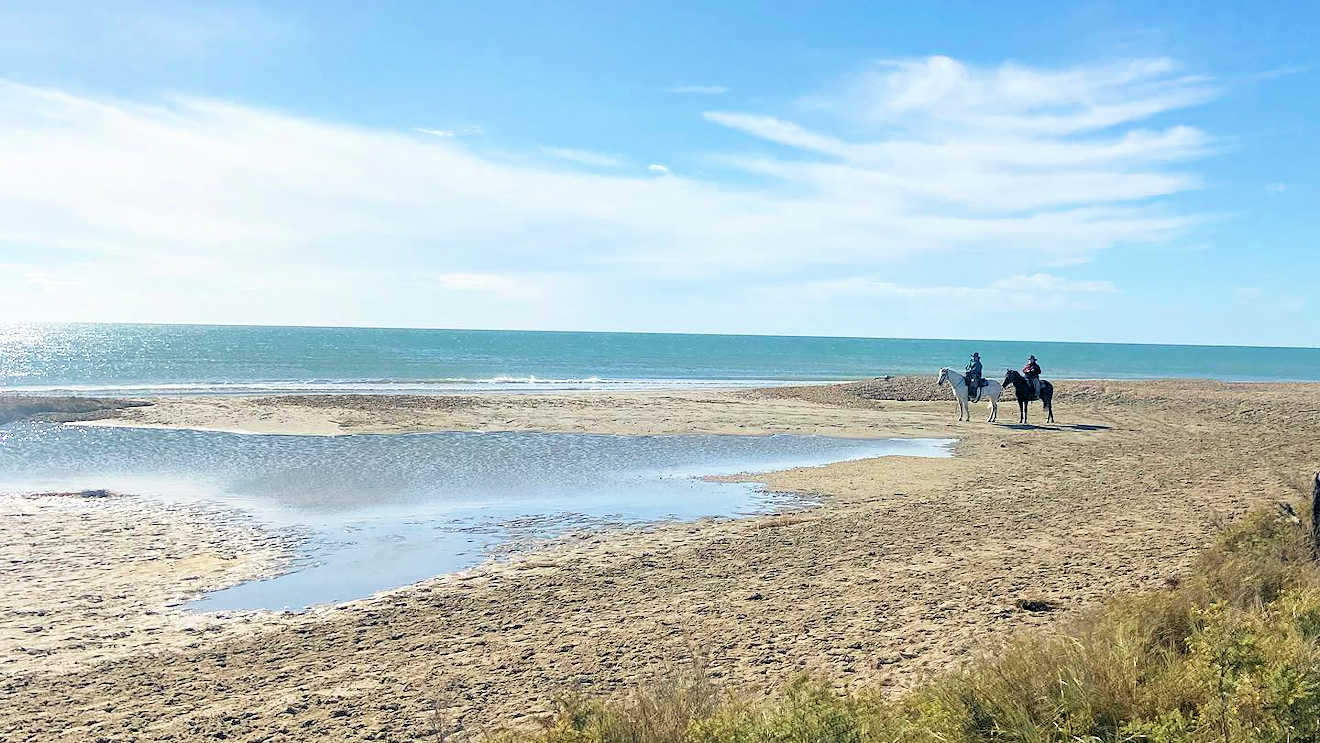
Despite covering an area of 1,500 km2, the Camargue is home to just over 100,000 people (50,000 people, if you exclude the city of Arles, which is technically on the border of the Camargue). The population density is only 6 inhabitants per km2, which makes the Camargue the least most densely populated region of France. The average population density in Europe is 117 inhabitants per km2.. There are just a few areas of Europe, such as Lapland (2 inhabitants per km2), Kainuu in central Finland (4 inhabitants per km2) and Jämtlands län on the border of Norway and Sweden; which have fewer people than the Camargue.
The Camargue only has 6 towns of any real size. Almost half the population of the Camargue live in the beautiful old Roman city of Arles, which lies on the banks of the River Rhone. After Arles, the largest settlements are Saint-Gilles-du-Gard (13,000 people), the coastal town of Port-Saint-Louis-du-Rhône (8,500 inhabitants), Le-Grau-du-Roi on the Mediterranean coast (8,300 people), Aigues-Mortes (6,000 inhabitants) and the beach resort of Saintes-Maries-de-la-Mer (2,500 people)
#10 Camargue fact: 20,000 Black bulls
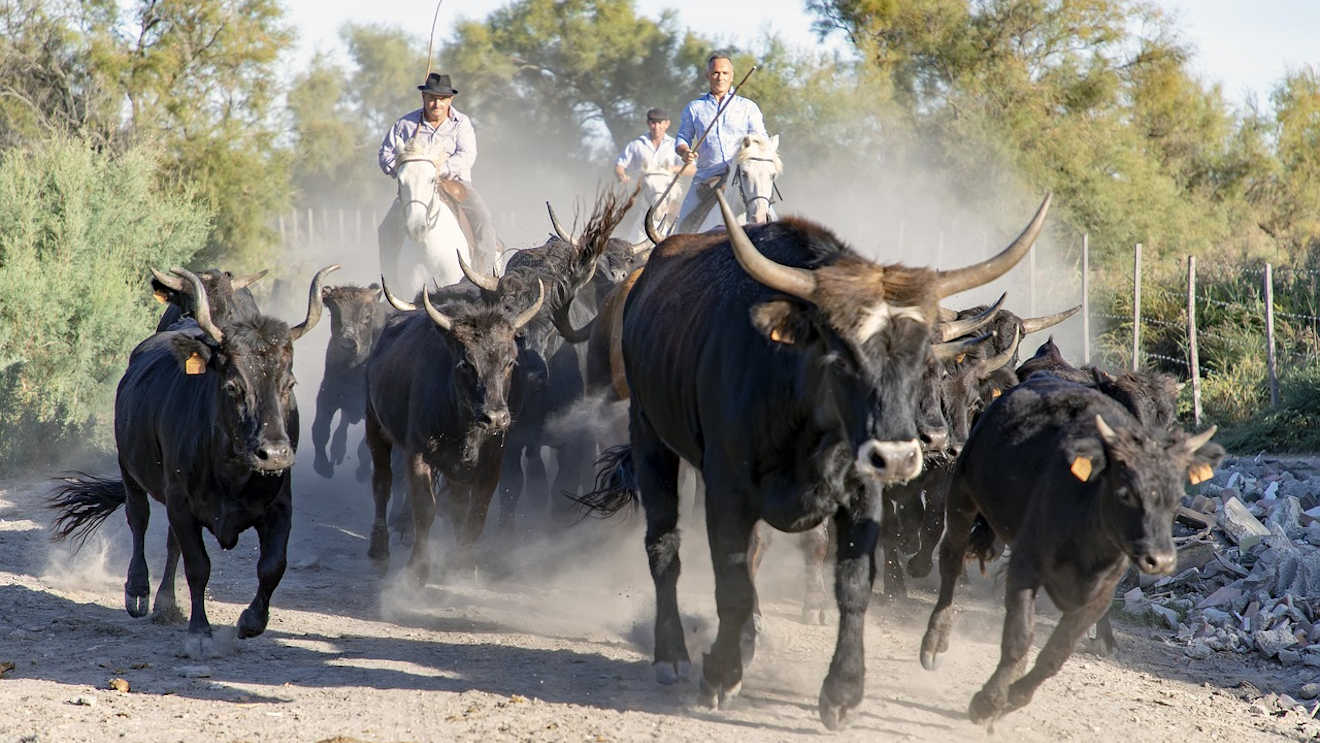
The Black Camargue bulls are a breed of domestic cattle native to the Camargue marshlands. The official name of this breed is Raço di Biòu and they have been reared in the Camargue for centuries. The Raço di Biòu cow is black all over and they have distinctive large curved horns. There are over 20,000 of the black bulls in the Camargue and they are mainly raised in semi-feral conditions in the wetlands. The bulls are primarily used for a type of blood-less bullfighting in the Camargue, where instead of killing the bulls, the matador attempts to remove a small rosette from the forehead of the bull. The bulls are often herded into the bull ring by Guardians riding the famous white horses of the Camargue.
Where to next . . .?
If you are planning a trip to the South of France in 2024, then Camargue is an excellent location. The Camargue is a stunningly beautiful part of Southern France and the largest river delta in Europe. This large area of salt marshes and wetlands is home to the famous pink flamingos, the white horses and the black bulls of the Camargue. The Camargue has more than 400 species of birds and is officially classified as a Regional Park in France. The historic city of Arles, lies in the centre of the Camargue and it was here that Vincent van Gogh painted some of his most memorable landscapes. You can also enjoy visiting the walled town of Aigues-Mortes.
If you are planning a trip to the Camargue or the South of France in 2024, then the following articles are a good source of local information:
Visit the historic coastal town of Saintes-Maries-de-la-Mer in 2024 and discover the best beaches and restaurants to visits, as well as the sites to see in the town and surrounding Camargue region.
|
Aigues-Mortes was originally built as the principal port in the South of France. The walled town of Aigues-Mortes is now a mandatory stopping off point for visitors on any tour of the South of France.
|
Find out the fascinating history behind the annual pilgrimage of thousands of Gypsies from across Europe to the small coastal resort of Saintes-Maries-de-la-Mer to celebrate their Patron Saint . |
Discover more information about Vincent van Gogh's period in Arles and his life in Southern France and plan your visit to take in some of the scenes painted by van Gogh in the beautiful city of Arles.
|
Go Languedoc provides high quality holiday accommodation across the South of France. Check out these stunning holiday villas & gites to rent in 2024 near Montpellier and the Camargue.
|
The ancient Roman city of Arles is the gateway to the Camargue region and is famous as the setting for many of the paintings of Vincent van Gogh and Paul Gaugin.
|
Contact Iain by Email if you have any particular questions you would like to ask about visiting Carcassonne and the South of France. If you liked the article then please share it with others using the Twitter and Facebook buttons below. I wish you a wonderful stay in the South of France.






